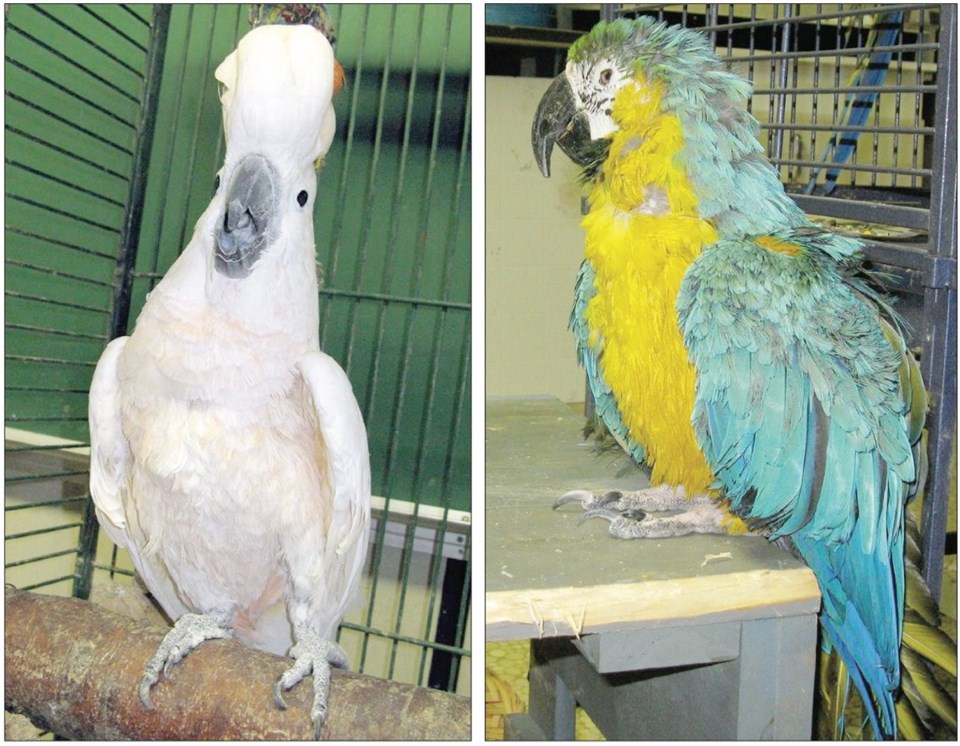Operators of a parrot refuge in Coombs have been urged by the B.C. SPCA to trim their collection of birds.
Lorie Chortyk, spokeswoman for the B.C. SPCA, said the operators of the World Parrot Refuge have been advised to reduce the number of parrots kept at the facility on the Alberni Highway.
“We have been urging them to disperse some of the birds out of there so that it’s a manageable situation,” Chortyk said in a telephone interview.
She said there are about 600 birds at the refuge. Other reports have put the number closer to 450, with past numbers reaching as high as 900.
Nobody from the World Parrot Refuge could be reached for comment. But Chortyk said the SPCA understands bird lovers and avian rescue groups have stepped forward to help.
The World Parrot Refuge was the brainchild of Wendy Huntbatch and her partner, Horst Neumann. The couple bought the land in 2004 to build a sanctuary for parrots that were no longer wanted by their human owners.
Huntbatch, whose commitment and devotion to the parrots made her the backbone of the refuge operation, died in February of cancer. She was 71.
Her son, Justin, told the Times Colonist at the time that his mother never believed parrots should be kept as pets and was dead set against trafficking and importing the bird into Canada. On the other hand, she was devoted to making a home for those already here.
Dr. Chris Collis, veterinarian and owner of Glenview Animal Hospital, where some specialized avian care is offered, said parrots — especially large parrots, such as macaws or cockatoos — are extremely tough to keep as pets.
Collis said he has read that some species have an intelligence equivalent to that of a four-year-old human. They are also quite strong, have very powerful bills and can be quite destructive, even dangerous.
Frequently, the birds develop neurotic behaviour, plucking out or chewing on their own feathers. Sometimes they injure themselves, dying from secondary infections.
“Most of these birds are extremely bored with their lives and are very unstimulated,” Collis said. “And they tend to mutilate themselves.”
Another complication is the animals’ longevity: Some parrot species can live well over 70 years. They frequently outlive their human owners.
Collis said he has heard of people specifying in their wills the future caregiver of a beloved parrot.
More commonly, he said, a large, long-lived parrot will be shifted to a new owner every three to five years. That’s about the longest commitment most people can manage.
Exceptions exist, and he said he has encountered committed people who have the capacity to keep such a large parrot happy.
Outside their natural habitat, Collis said, the best places for large parrots are institutions such as zoos or special facilities devoted to their care.
“These birds are just too darned smart, unfortunately, to be kept in the ways most people and most homes are set up to keep them.”
Generally speaking, he said, he is not in favour of keeping parrots as pets when their size exceeds that of a cockatiel. On the other hand, cockatiels, lovebirds, conures and budgies are all well suited to life in cages and in homes and can live happy, contented lives.
“These are all species that can adapt incredibly well to the presence of people,” he said.
“It’s perhaps too strong, but they even seem to enjoy their owners’ company.”



